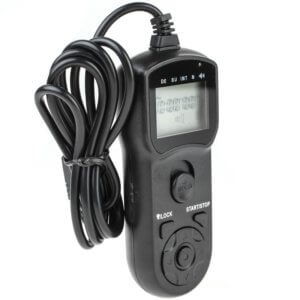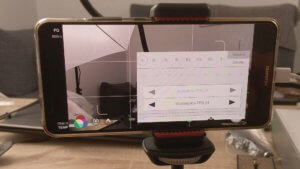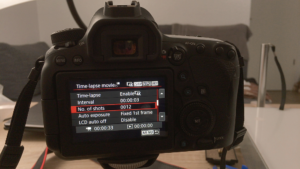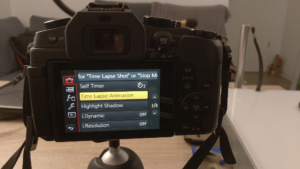Timelapse video capturing
Meanwhile its a lot easier to capture timelapse videos because some cameras are able to generate the video in the cam just like a couple of smartphones.
Introduction
 As a basis there still should be a sturdy tripod available and if not built-in you need an intervall release to trigger the shutter of the camera on a regular base.
As a basis there still should be a sturdy tripod available and if not built-in you need an intervall release to trigger the shutter of the camera on a regular base.
If your camera doesn’t provide a built-in intervall timer i still recomment the JJC cable release with an intervalltimer an cables to fit different cameras.
But meanhwile a lot of smartphones are capable to record very decent timelapse videos.
I did a little video on the different options:
Smartphones
 Both the iPhone 6s and the Huawei Mate 10 Pro are capabale of doing timelapse videos. Besides choosing the function there is nothing else to do, just point and shoot and let the smartphone do the rest. This works out pretty good, but there is a limitation in resolution. While the iPhone 6s can record at least 1080p the Huawei does only 720p which is not enough too me.
Both the iPhone 6s and the Huawei Mate 10 Pro are capabale of doing timelapse videos. Besides choosing the function there is nothing else to do, just point and shoot and let the smartphone do the rest. This works out pretty good, but there is a limitation in resolution. While the iPhone 6s can record at least 1080p the Huawei does only 720p which is not enough too me.
But with the Gimbal DJI Osmo Mobile 2 the iPhone can record time- or motionlapse recording in 4K. But there is another alternative and that is the app FilmicPro which also renders videos in 4K but in a higher bitrate.
Canon 6D MK II
 The Canon 6D MK II which i introduced here in a blog post not only offers an intervall timer but also offers a special function to record timelapse videos and in this function the camera is capable doing the timelapse in 4K resolution while the camera in normal video mode is restricted to 1080p.
The Canon 6D MK II which i introduced here in a blog post not only offers an intervall timer but also offers a special function to record timelapse videos and in this function the camera is capable doing the timelapse in 4K resolution while the camera in normal video mode is restricted to 1080p.
Just like with the JJC timer you define the number of images and the intervall. In addition you can choose if the exposure measurement is done prior to first shot or with every shot the camera takes. Just like a smartphone after finishing the video is stored on to the memory card.
Lumix G81
 Just like the Canon the Lumix G81 offers an intervall timer and a special timelapse function. But here 4k resolution is standard because the Lumix G81 can record regular videos in 4K.
Just like the Canon the Lumix G81 offers an intervall timer and a special timelapse function. But here 4k resolution is standard because the Lumix G81 can record regular videos in 4K.
The main parameters for the timelapse function are very much the same like on the Canon 6D MK II besides the option for the exposure measurement. If there are differences in lightning and you wish to see those differences in the later video it might be better to choose manual exposure.
Commonalities and advantage Lumix
All discussed solutions will render a video on the device which can viewed right away or shared on social media. And of course you still can process the video later on at home, because the quality even on an iPhone 6s using the Filmic Pro app is very good.
But anyway there is an essential advantage for the Lumix G81 and probably other modells from Panasonic. The camera not only renders the video according to your settings but most important the cameras keeps all single frames of the timelapse captures on the memory card. If normally should in RAW you could take the single images process them in Lightroom and render the timelapse video in an application you prefer. This makes it possible to render the timelapse video in a higher resolution than 4K if needed.
Conclusion
If you’re just going for the final result the all the discussed solutions will work fine. If you want to process the base imge before rendering the timelapse video you’re better off with the Lumix G81. On a Canon 6D MK II and similar camera just use the intervall timer and don’t use the timelapse function to get the same result.
ciao tuxoche



